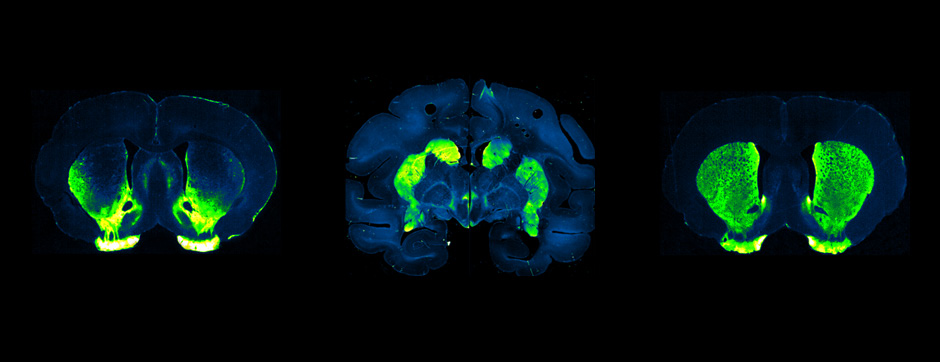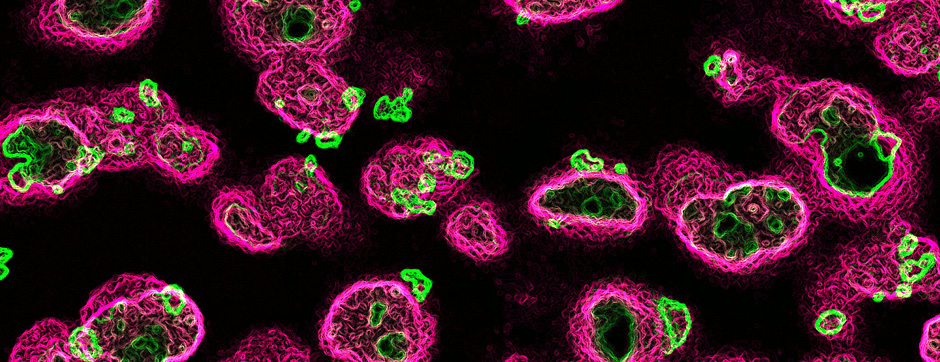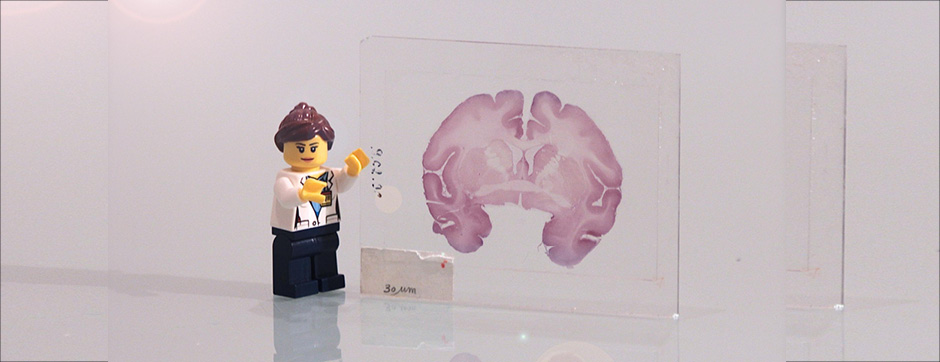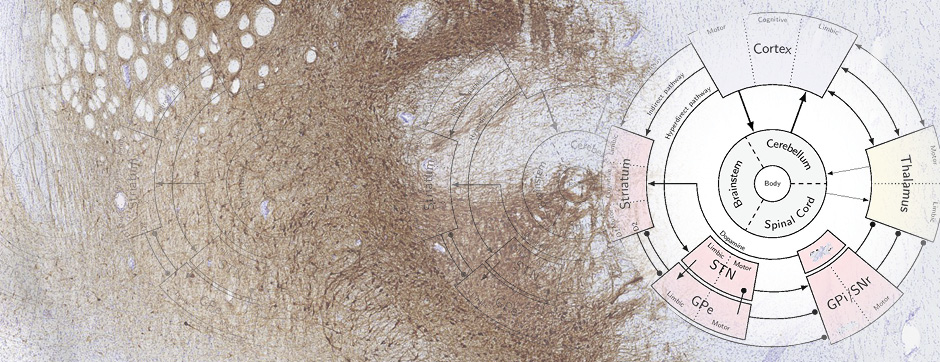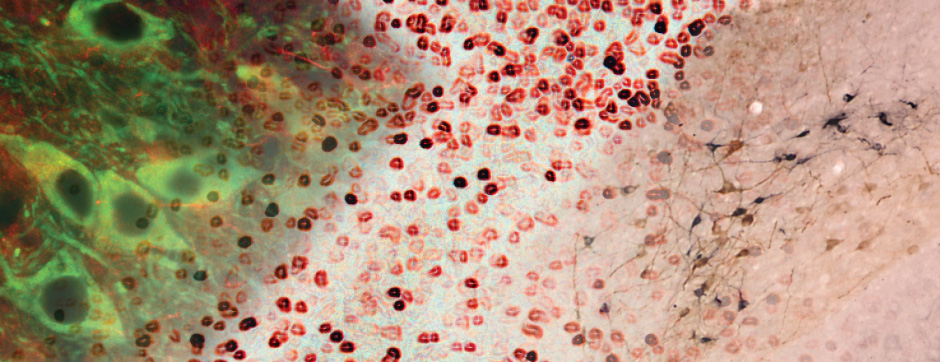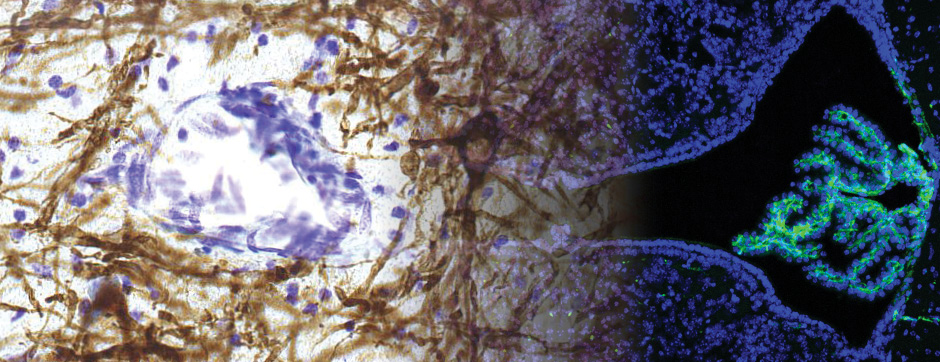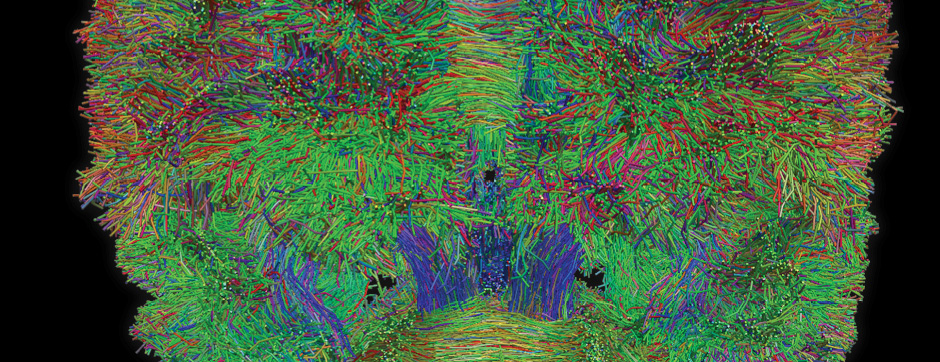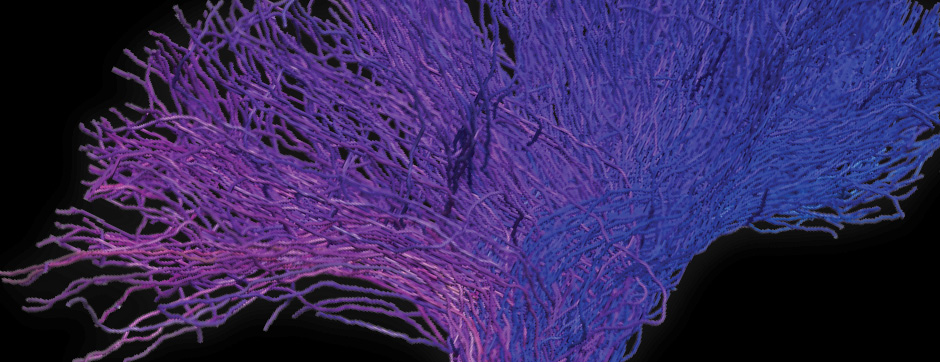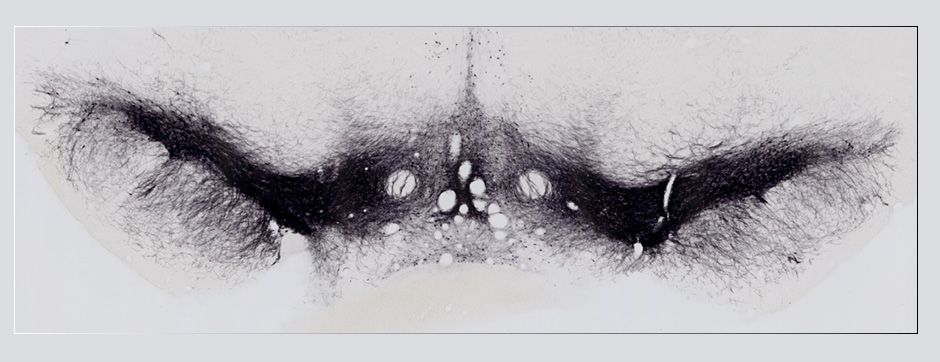
Anaëlle Braine
Anatomical and functional characterization of amygdala-striatal circuits
octobre 2023 Directeur(s) de thèse : François Georges Résumé de thèseChanges in emotional states are known to modify posture, fine motor control, and coordination. This suggests an overlap between neuronal circuits underlying emotions and motor control. We thus performed an extensive review of the anatomical projections between emotional-related and motor-related structures. Based on this analysis, we focused the PhD on basolateral amygdala (BLA) projections to the dorsal striatum (DS) in mice. As the DS is functionally subdivided in dorsomedial (DMS) and dorsolateral (DLS) striatum, we first defined the anatomical and electrophysiological properties of DMS- and DLS- projecting BLA neurons. To do so, we used a palette of tracing tools combined with ex-vivo (patch-clamp). Anatomical and electrophysiological properties reveal two distinct DS-projecting BLA neuronal populations. We showed that the BLA topographically projects to the DS, with main projections to the DMS and that DMS-projecting BLA neurons are more excitable than DLS-projecting BLA neurons. To understand how BLA inputs are integrated in the DS, we determined the nature of DS neurons receiving BLA inputs using patch-clamp electrophysiological recordings in transgenic mouse lines following ChR2 expression in the BLA. BLA neurons preferentially excited medium spiny neurons (MSNs) and parvalbumin (PV) interneurons. This suggests that the BLA acts like a cortical input to the DMS. The function of BLA neuronal subpopulation is classically projection-defined. To shed light on the putative function of DMS-projecting BLA neurons, we focused on deciphering the neural circuitry of DMS-projecting BLA neurons and performed a whole-brain mapping of the inputs and outputs of this pathway. To do so, we used anterograde and retrograde viral cre-dependent strategies combined with semi-automatic mapping and counting analysis tools. We showed that DMS-projecting BLA neurons have extensive collaterals to olfactory and goal-directed circuits (olfactory tubercle and nucleus of the lateral olfactory tract), while receiving mainly limbic (ventral hippocampus, insular cortex) and olfactory inputs (piriform cortex). Known outputs of BLA involved in fear- and anxiety-related behaviors such as the Bed Nucleus of the Stria Terminalis, Central Amygdala and ventral Hippocampus were not innervated by DMS-projecting BLA neurons.
These anatomical results refined our hypothesis for the role of DMS-projecting BLA neurons in odor-guided behaviors. To test this hypothesis, we set out to record the axonal activity of DMS-projecting BLA neurons in vivo. To do so, we first carried out in vivo fiber photometry axonal imaging in the DMS of anesthetized mice and confirmed the functional connectivity of the main limbic inputs to DMS-projecting BLA neurons. We showed that both the insular cortex and the ventral hippocampus can send indirect disynaptic inputs to the DMS via the BLA. We then carried out in vivo fiber photometry in behaving mice in olfactory-related behavioral tasks such as the social interaction test and olfactory habituation-discrimination task. We show a phasic inhibition of the DMS-projection BLA axons, time locked to the investigation/interaction to non-social and social odors. Future studies manipulating the activity of these neurons would help us determine whether they drive motor-related information such as orientation and locomotor or valence information for odor-driven approach or avoidance.


